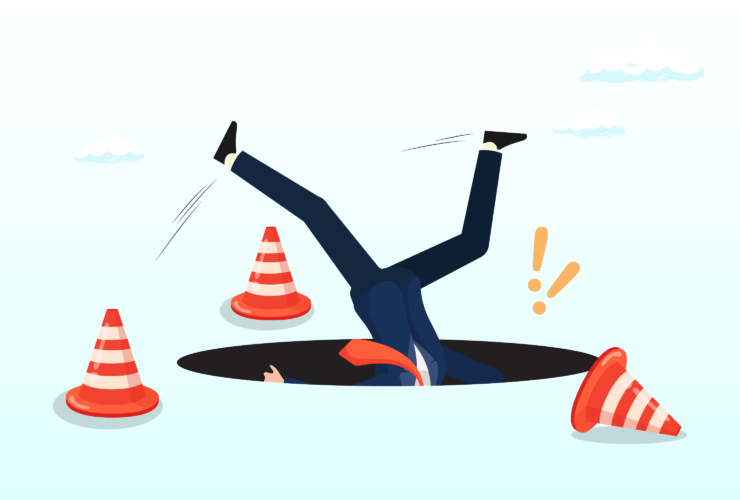SAFe supports the full range of development environments with four out-of-the-box configurations. The configurations can be accessed using the tabs. Each is described in the following sections and contains a guidance article on flow.
Essential SAFe
Essential SAFe is the basic building block for all SAFe configurations and is the most straightforward starting point for implementation. It builds on the principles and practices of Lean-Agile Leadership, Team and Technical Agility, Agile Product Delivery, and Continuous Learning Culture competencies.
SAFe is anchored by an organizational structure called the Agile Release Train (ART), where Agile teams and critical stakeholders are dedicated to a meaningful, ongoing solution mission. Essential SAFe includes both the Agile team and ART constructs. The Team Flow article describes how Agile Teams deliver a continuous flow of value to the customer. The ART Flow article explains how a team of Agile Teams, working with their extended stakeholders, can get closer to their customers and build Continuous Delivery Pipelines (CDPs) to accelerate the delivery of valuable products and services.
Large Solution SAFe
The Large Solution SAFe configuration introduces the Enterprise Solution Delivery competency, which supports those building the largest and most complex solutions that require multiple ARTs and Suppliers but do not require portfolio-level considerations. Such solution development is typical for aerospace and defense, automotive, and government industries, where the large solution—not portfolio governance—is the primary concern.
The Solution Train organizational construct helps enterprises with the most significant challenges—building large-scale, multidisciplinary software, hardware, cyber-physical, and complex IT systems.
The Solution Train Flow article describes how multiple ARTs can work together with an aligned mission to build some of the world’s largest and most important systems under a lightweight and cooperative governance model. Developing these solutions requires additional roles, artifacts, events, and coordination
Portfolio SAFe
The Portfolio SAFe configuration is the minimum set of competencies and practices that can fully enable business agility. Portfolio SAFe provides two additional competencies, Organizational Agility and Lean Portfolio Management, beyond those included in Essential SAFe.
The LPM competency aligns portfolio execution to enterprise strategy and organizes development around the flow of value through one or more value streams. The Organizational Agility competency extends Lean thinking and practice throughout the enterprise and enables strategy agility.
In addition to the competencies, Portfolio SAFe provides principles and practices for portfolio strategy and investment funding, Agile portfolio operations, and Lean Governance. The Portfolio Flow article how to further accelerate the flow of the significant initiatives (epics) needed to accomplish the portfolio vision and advance the enterprise strategy.
Full SAFe
The Full SAFe configuration is the most comprehensive configuration, including all seven core competencies for Business Agility. The world’s largest enterprises typically use it to maintain portfolios of large and complex solutions. In some cases, multiple instances of various SAFe configurations may be required.
Spanning Palette
The Spanning Palette contains various roles and artifacts that may apply to a specific Agile Team, ART, Large Solution, or Portfolio context. An essential element of SAFe’s flexibility and adaptability, the spanning palette contains additional guidance elements for specific contexts. There are two versions of the spanning palette. One is used by Essential SAFe and only includes Vision, Roadmap and System Team elements, while the other one serves all other configurations and includes all the below listed elements. However, since SAFe is a framework, enterprises can apply any item from the more extensive spanning palette to Essential SAFe.
Below is a brief description of each spanning palette element:

- Vision – The vision describes a future view of the solution to be developed, reflecting customer and stakeholder needs and the Features and Capabilities proposed to address those needs.
- OKRs – When used within SAFe, OKRs can help to support the Core Values of transparency and alignment between the Enterprise and Portfolio strategy and the work of the Agile Release Trains and Agile Teams to deliver on this strategy. Additionally, OKRs can be applied to measure organizational improvement activities, including the desired outcomes for a SAFe transformation.
- Roadmap – The roadmap communicates planned ART and value stream deliverables and milestones over a timeline.
- AI – Artificial Intelligence (AI) describes a wide range of intelligent machines capable of performing tasks that typically require human intelligence. SAFe offers a foundational context for applying AI in the enterprise and explains how SAFe can accelerate the successful adoption of this advanced technology.
- Shared Services – This represents the specialty roles necessary for an ART or Solution Train’s success but cannot be dedicated full-time to any specific train.
- Community of Practice (CoP) – A community of practice is an informal group of team members and other experts acting within the context of an ART or enterprise with a mission to share practical knowledge in one or more relevant domains.
- System Team – The system team is a unique Agile team that assists in building and using the continuous delivery pipeline and, where necessary, validating full end-to-end system
- Measure & Grow – Measure and Grow is how portfolios evaluate their progress towards business agility and determine their next improvement This evaluation is achieved through SAFe’s three measurement domains, Outcomes, Flow, and Competency, providing a comprehensive yet simple model for measuring progress toward business agility.
Foundation
Anchored by the Lean-Agile leadership and continuous learning culture competencies, the SAFe foundation contains the mindset, values, principles, and implementation guidance needed to implement SAFe practices and achieve business agility. These are foundation elements:
- The Lean-Agile Mindset – combines the beliefs, assumptions, attitudes, and actions of SAFe leaders and practitioners who embrace the concepts of the Agile Manifesto and Lean It’s the personal, intellectual, and leadership foundation for adopting and applying SAFe principles and practices.
- Core Values – Four core values of Alignment, Transparency, Relentless Improvement, and Respect for People define the belief and value system for SAFe.
- SAFe Principles – SAFe practices are grounded in ten principles that synthesize Agile methods, Lean product development, DevOps, and systems thinking, coupled with decades of practical field experience.
- Implementation Roadmap – Implementing the changes necessary to become a Lean- Agile technology enterprise is a substantial change for most SAFe provides an implementation roadmap to help guide organizations on this journey.
- SPC – A SAFe Practice Consultant (SPC) is a change agent who combines their technical knowledge of SAFe with an intrinsic motivation to improve their company’s software and systems development processes.
© Scaled Agile, Inc.
Full article can be found here.
SAFe and Scaled Agile Framework are registered trademarks of Scaled Agile, Inc.








